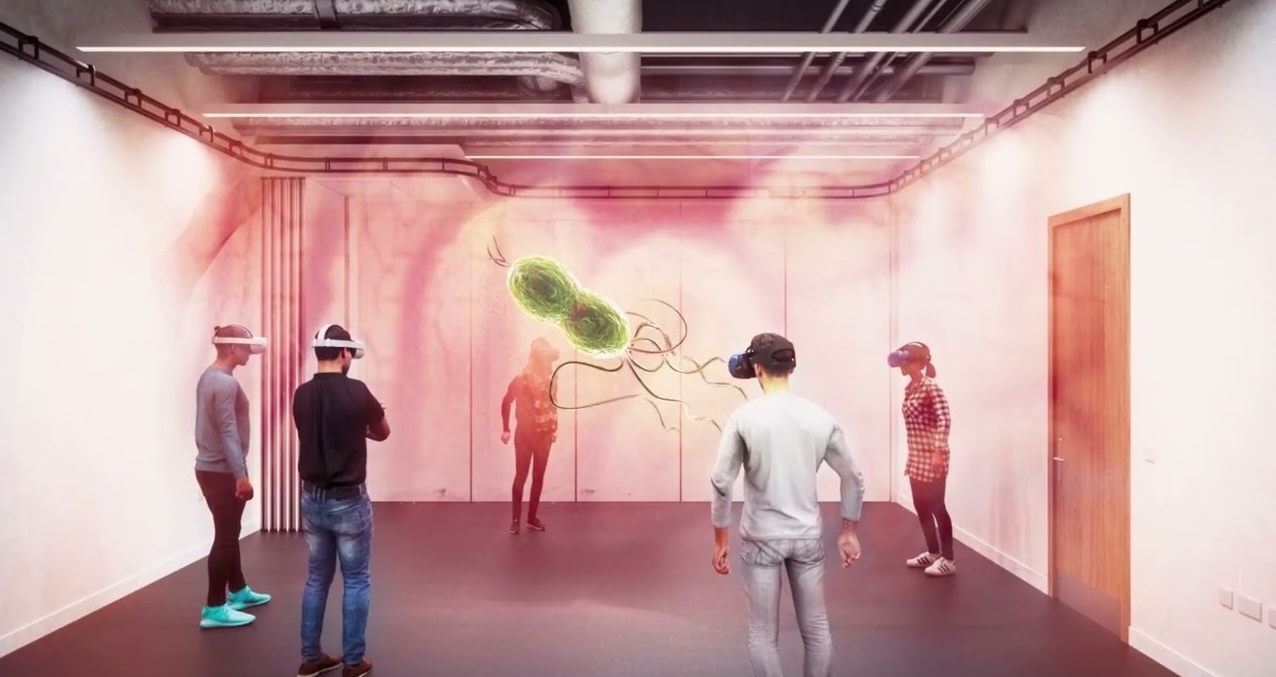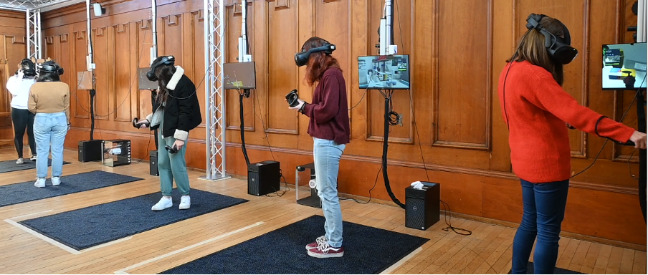
Development of novel VR-based teaching content
The University of Glasgow has invested heavily in the creation of both research and teaching spaces for VR development (ARC-XR and Partick Burgh Hall, respectively). This visionary approach pre-dates the COVID pandemic and demonstrates the University’s commitment to novel technology-based approaches to teaching and learning. Initially, PBH delivered only those apps made available through the Edify platform. However, ARC-XR provides a test space for new app developments, and we have used that space to create bespoke apps for teaching and public engagement.
VR app creation is a time-consuming process, but having a dedicated VR teaching space to easily deploy new content provides the impetus for development. This case study focusses on two approaches to VR content creation that could only have been possible through having access to ARC-XR and PBH.
‘Cell: The Genesis’. This is an escape room game that was partly funded by the Physiological Society. The aim was to create an educational, fully immersive, VR game that focussed on glycolysis and cell function. The game takes around 20-30 minutes to complete and can be downloaded from Itch.io. (https://genesis-cell.itch.io/cell-the-genesis-vr) . We used PBH to debug and evaluate the game using groups of 3rd year undergraduate (physiology BSc) students (Figure 1). Further (untethered) testing was completed in ARC-XR.

Figure 1. Playtesting ‘Cell:The Genesis’ at Partick Burgh Hall. Physiology (BSc) students.
‘Tour of the Spinal Cord’. For this app we took a different approach, this time presenting the student with a cell-level reconstruction of a section of the spinal cord (dorsal root ganglia). The data was derived from a 3D tissue block (35x35x70um) that was sectioned using Electron Microscopy. All cellular structures were extracted using a variety of thresholding and segmentation tools using Slicer3D. The 3D mesh segments were then reduced and retopologised where necessary using Autodesk Maya. The resulting 3D object(s) were then imported to UNITY (Figure 2). Within UNITY a series of ramps were created to enable the player to explore the full height of the structure.

Figure 2. Tour of the Spinal Cord. A new approach to teaching histology.
Left - The segmented 3D cell models (from dorsal root ganglia) were imported to UNITY to create a fully immersive VR scene.
Right - Screenshot from a video demonstrating very positive (BSc) student engagement with the virtual spinal cord.
The Spinal Cord VR scene has been used by 3rd year undergraduate (physiology BSc) students and also primary 7 school pupils at PBH. The scene has also been used at multiple events (ie Glasgow Science Festival, ARCadia etc) and has always generated positive feedback. Current plans are in place to develop this (largely static) exhibit into an interactive app that can be incorporated into the undergraduate Neuroscience (BSc) degree.
Our internal service (XR Life Science) has developed 3 further applications; MyoSITE Anxiety, MitoMover and Data Gallery. All 3 have been extensively tested at PBH and ARC-XR. These will feature in future VR development case studies.
For further information on the development of content for use at PBH, please contact Prof Craig Daly (Craig.Daly@Glasgow.ac.uk).
Alternatively, visit www.xrlifescience.com for an overview of services that can be provided.

